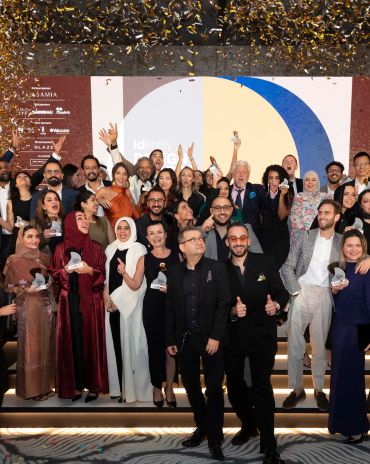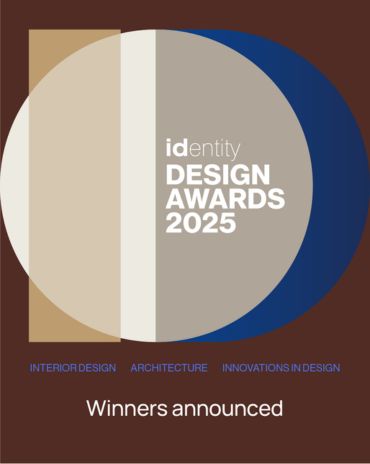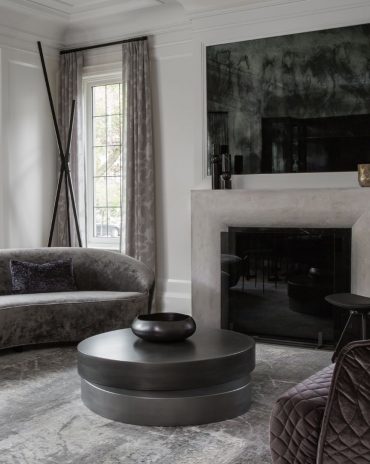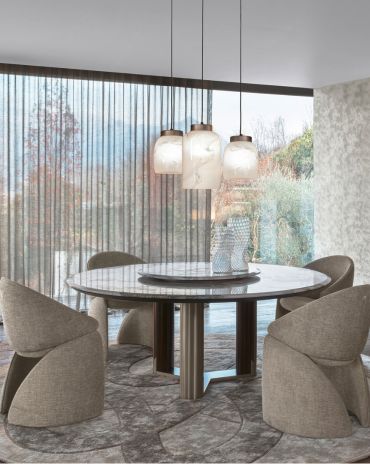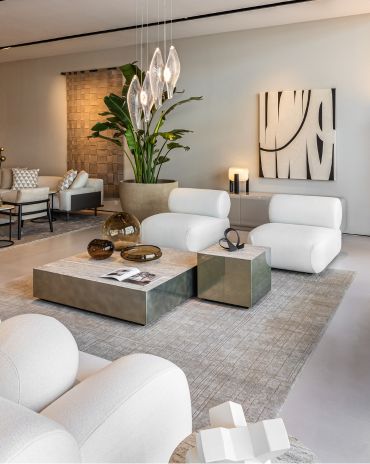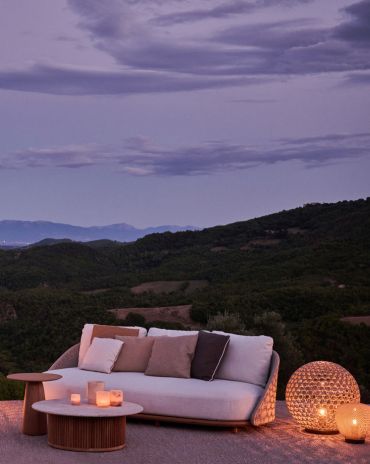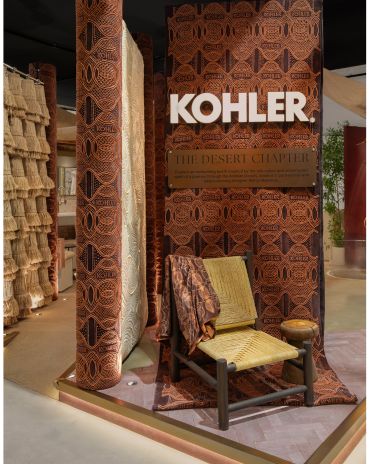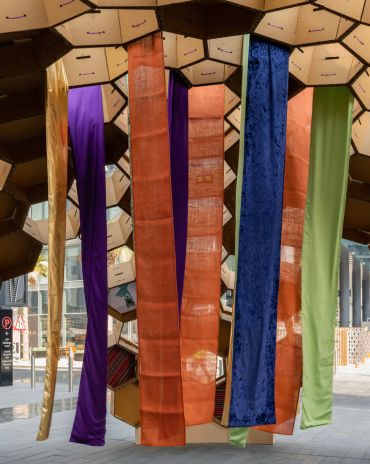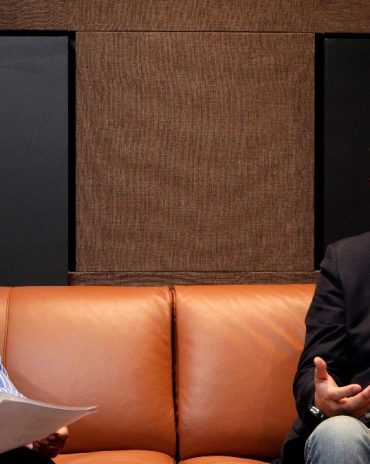Copyright © 2025 Motivate Media Group. All rights reserved.
Studio Toggle’s new villas in Kuwait rethink the modern Arab residential block
Ternion offers a balance between public and private spaces
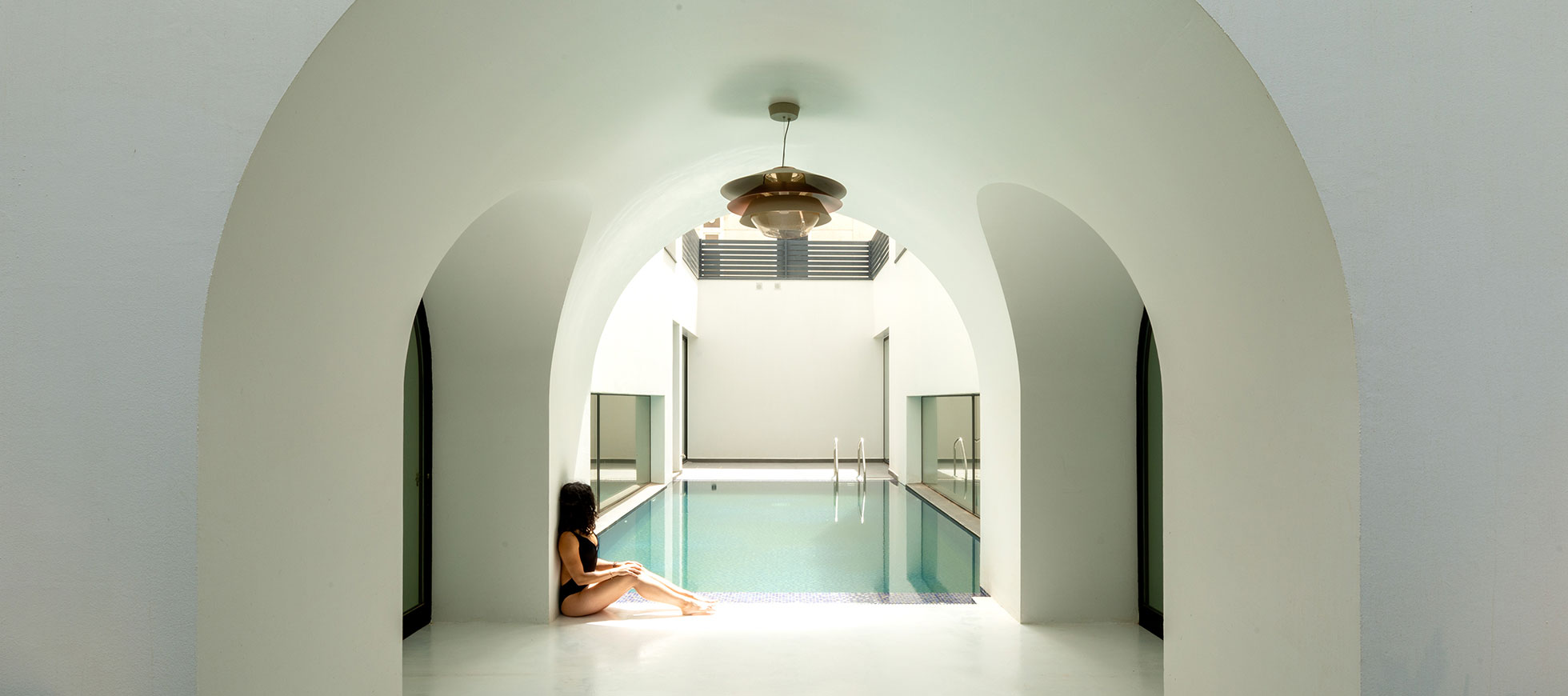
Studio Toggle has completed the design of three independent villas in Kuwait that rethink the the modern suburban Arab residential block – commonly populated with affluent independent villas.
Entitled Ternion, the three independent villas are variably stacked into prismatic volumes, creating a porous-pixellated massing that balances between private and public spaces.
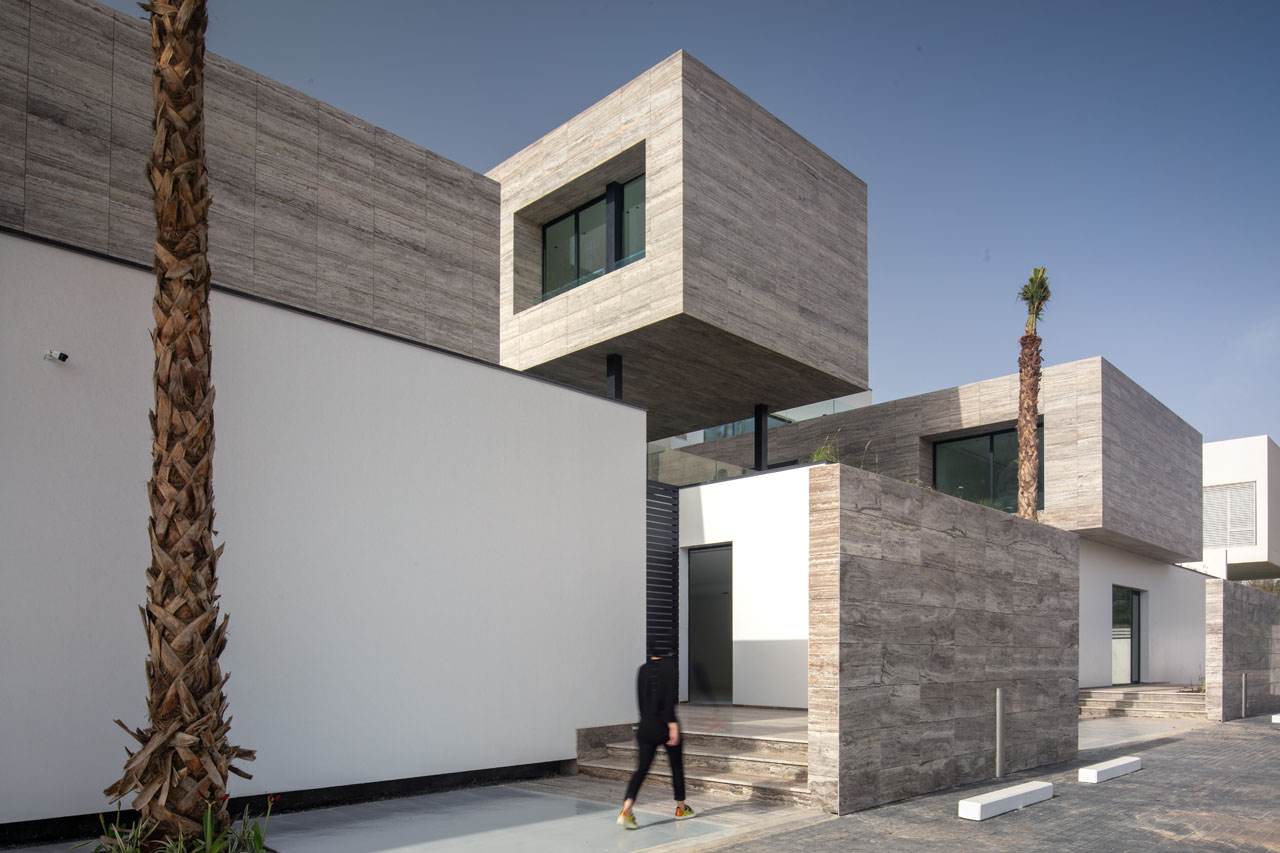
All photography by Gijo Paul George
“In a society where privacy and weather become the overriding design directives, the norm in residential architecture is to create impenetrable and introverted structures that maximise the climate-controlled built-up area. The brief dictated the creation of three independent villas with private gardens and private swimming pools, that can be utilised on a year-round basis. This was particularly challenging since Kuwait is known for its arid desert climate which is one of the hottest in the world and dust storms are a regular occurrence,” said the architects.
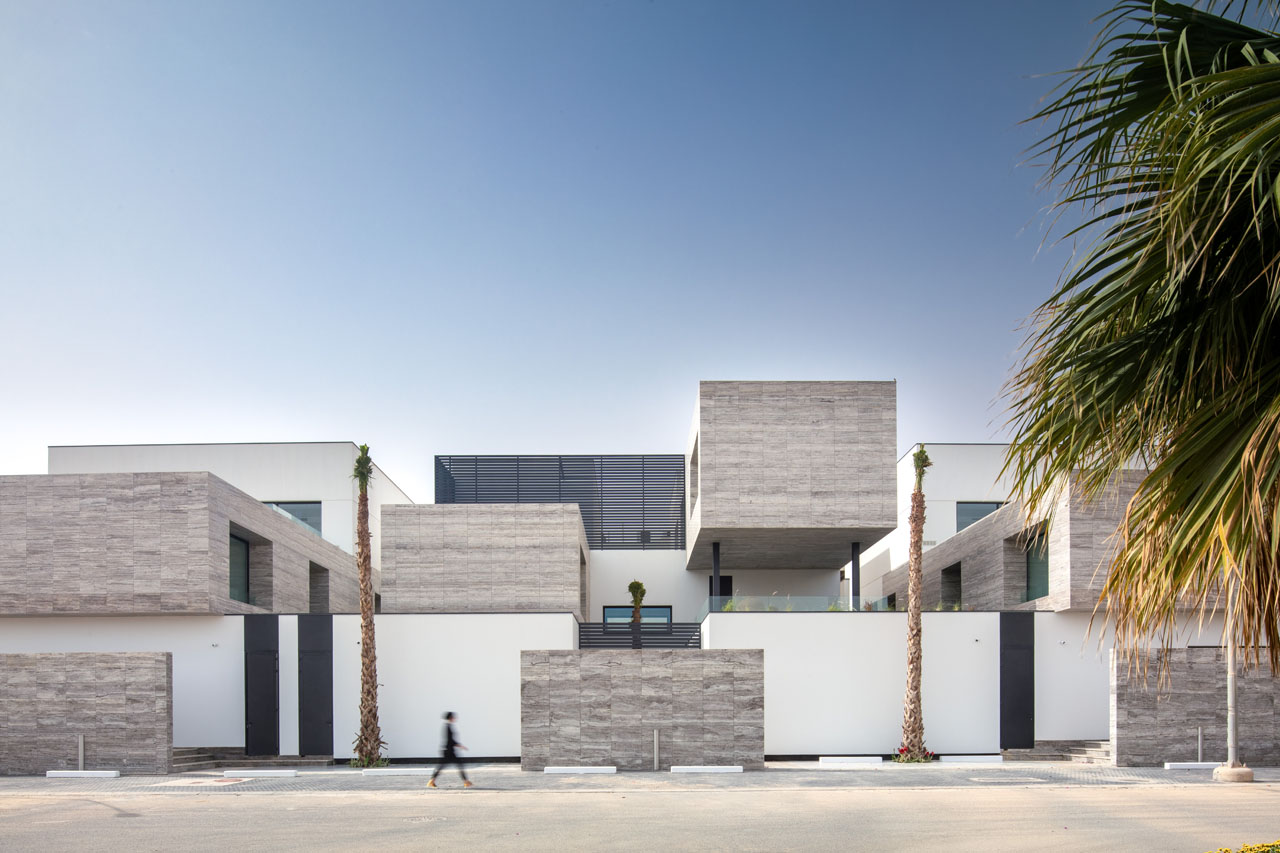
While it could not be completely avoided, the architects sought to minimise the use of active climate control by employing passive cooling techniques, traditionally part of the vernacular. Combining these with self-shading, massing strategies gave the project the direction it needed both spatially and aesthetically.
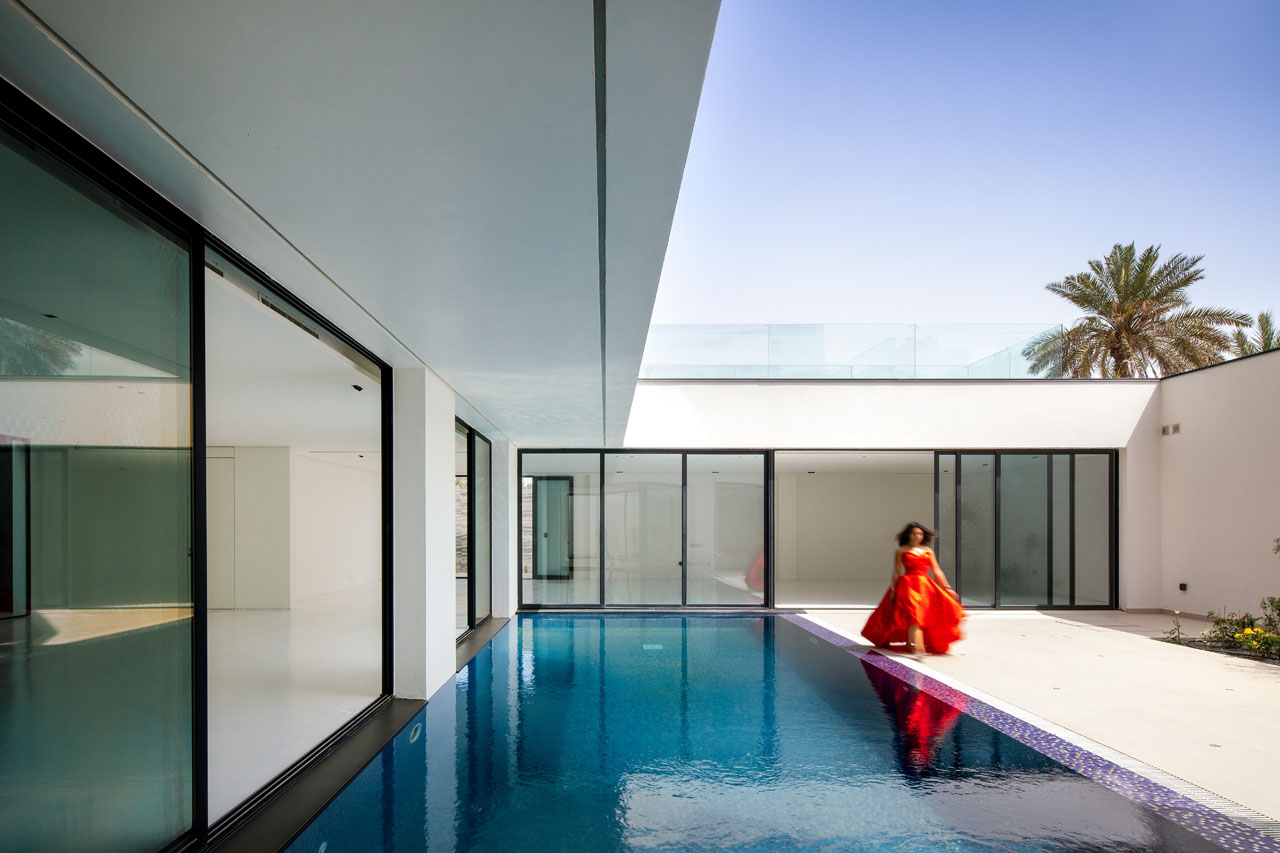
Each villa is centred around a private courtyard featuring a swimming pool as a modern functional interpretation of a traditional ‘Hosh’ as a water feature. The social spaces are grouped around this pool and feature longitudinal, full-height glazed windows facilitating cross ventilation and evaporative cooling when open.
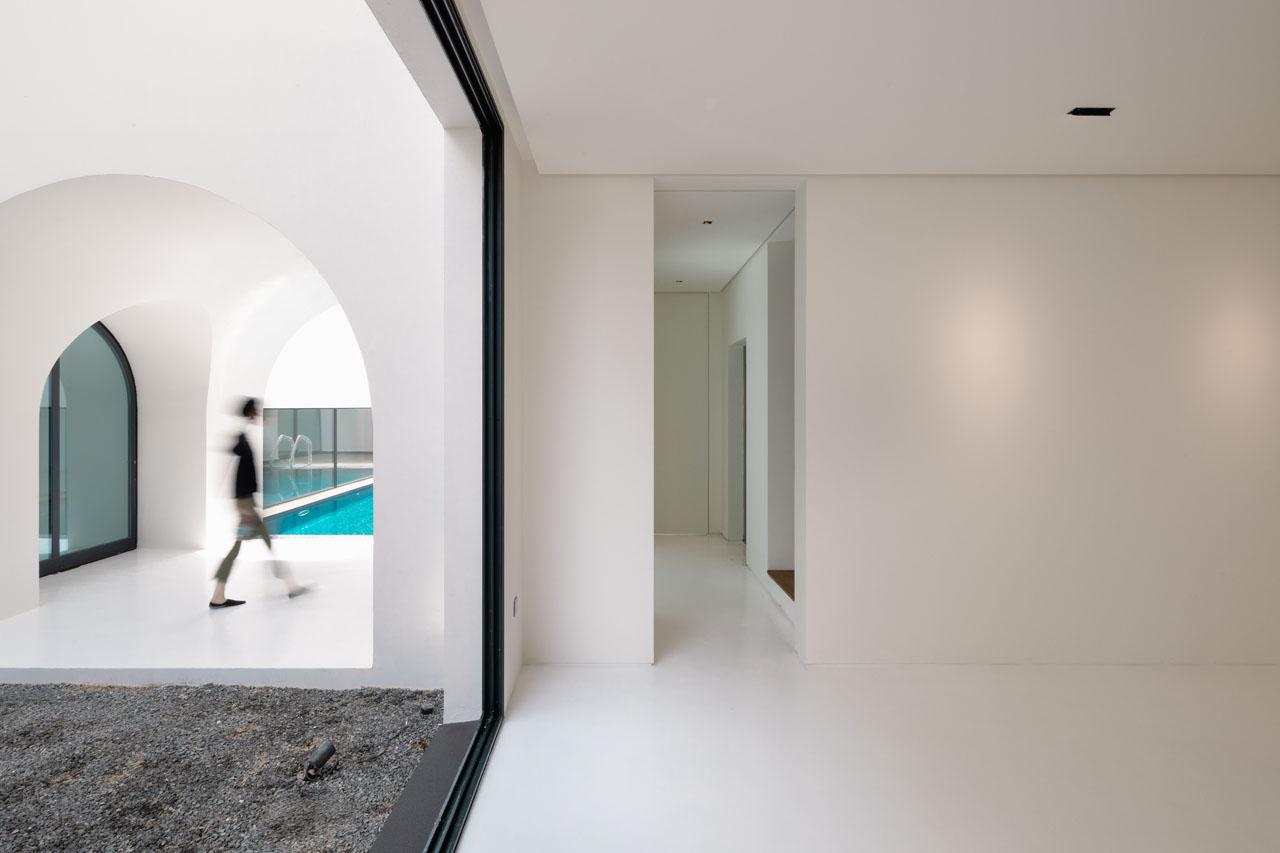
The glazed internal walls afford panoramic views to the garden and pools while shaded from the scorching sun by cantilevered volumes mitigating the heat gain.
The architecture of the three villas is to be read as a whole, composed of a series of hierarchical social spaces, organised based on their varying degrees of openness and privacy. These range from fully enclosed, private, and silent gardens to vast terraces, opening up to the streetscape and the vistas beyond.
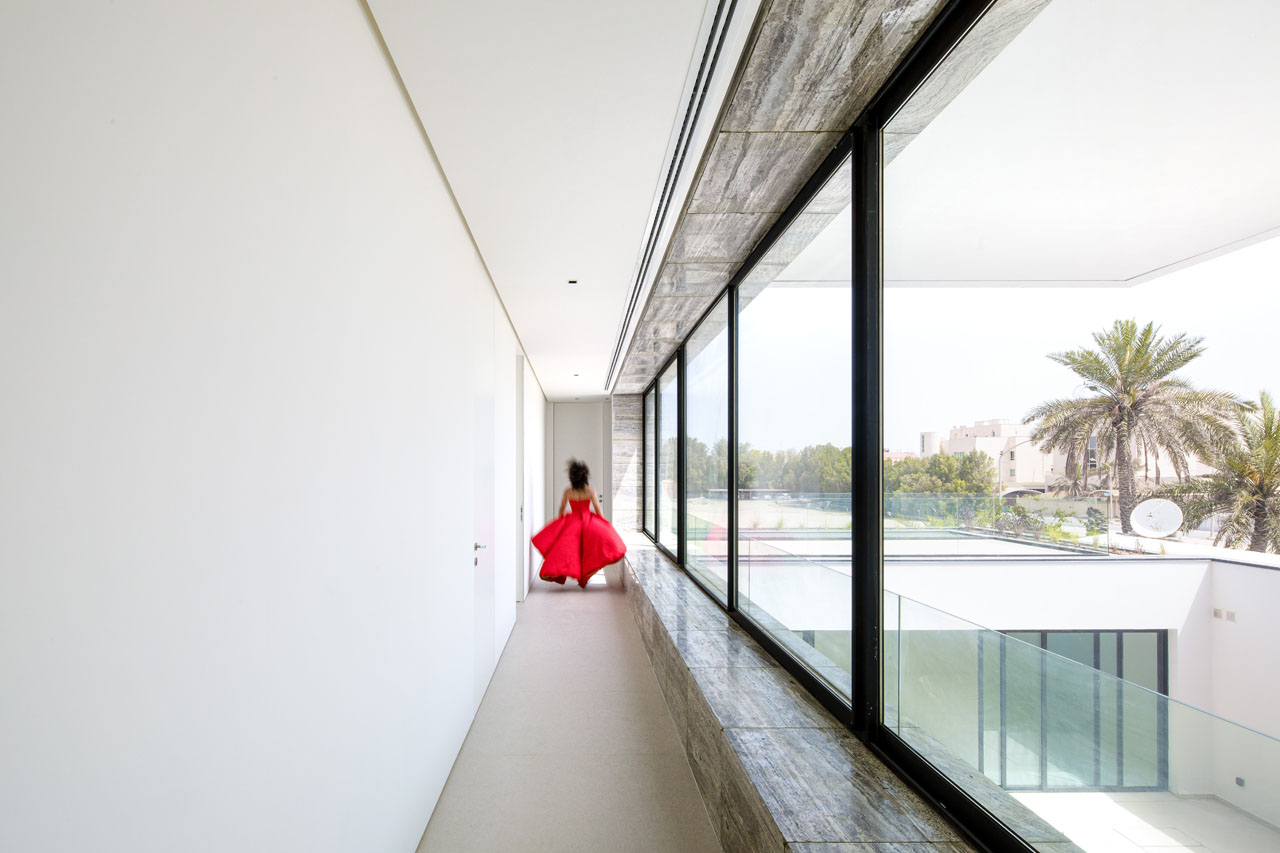
The inhabitable volumes are organised around these social spaces, defined by their function and need for transparency. These monolithic volumes, by virtue of their compositions, act as frames, shields or cantilevers, providing shade from the sun, protection from the desert wind, and frame the endless views towards the sea from multiple vantage points.
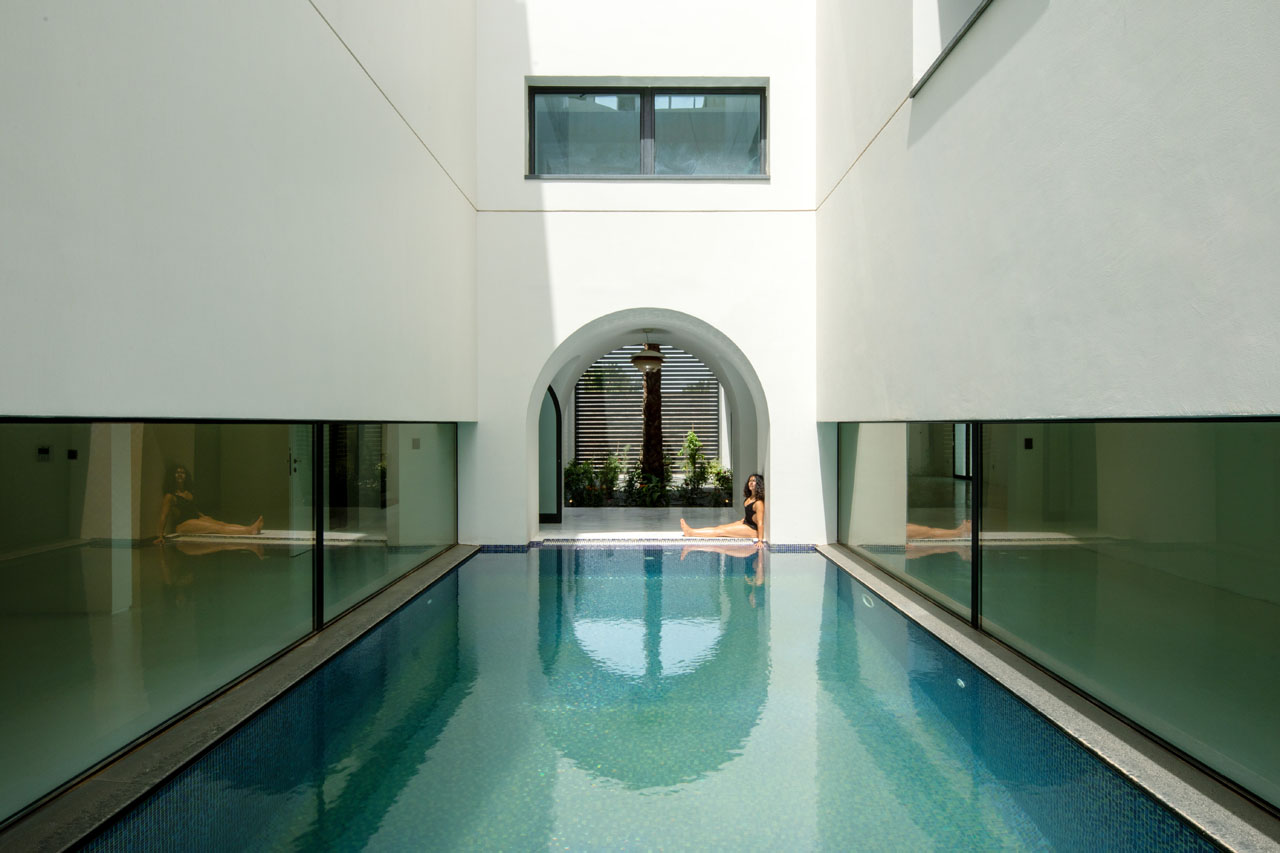
Usable terraces, covered porticos, hidden nooks and viewing platforms are all part of a selection of multi-use spaces generated by modulating the massing. The expressive volumes of the three villas reach out to each other creating a streamlined street interface, thereby forging a unified identity for the development.
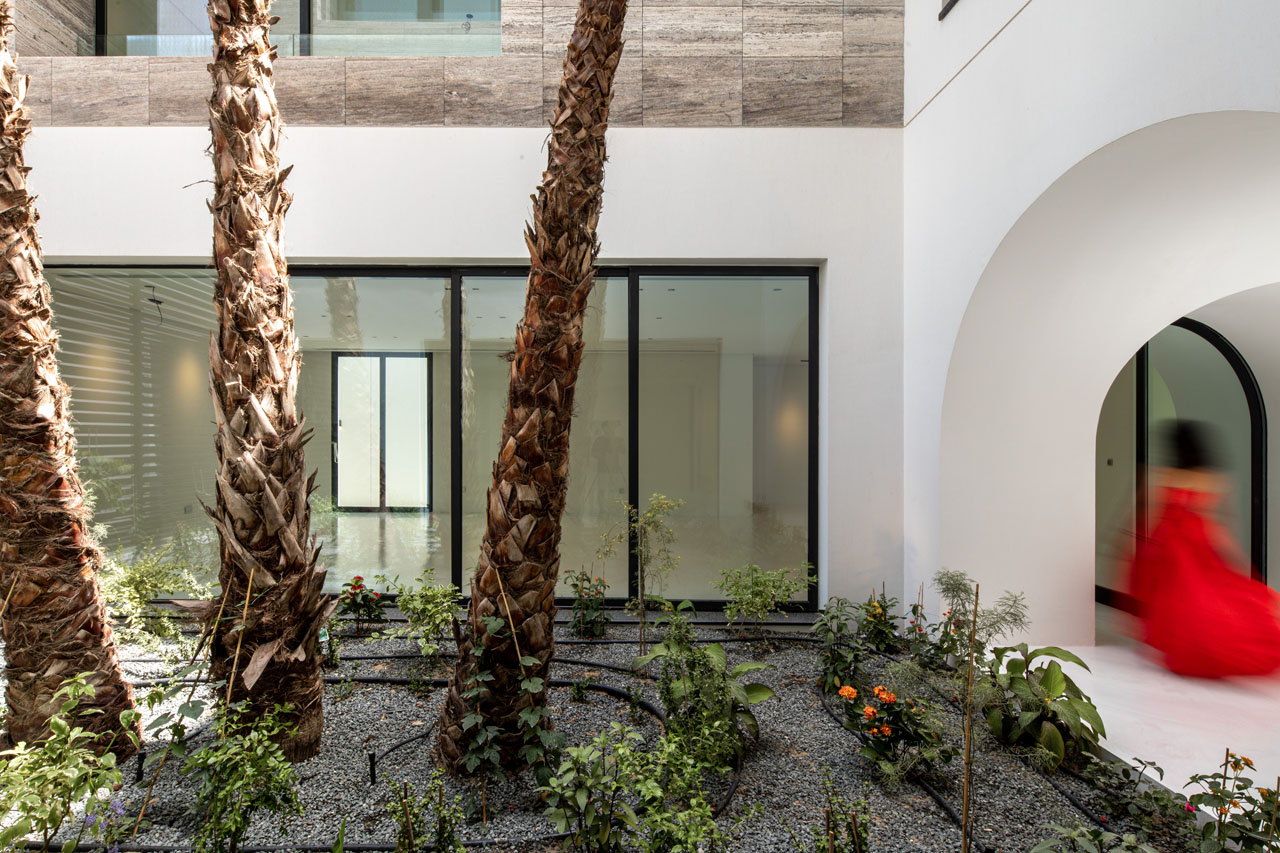
Ternion, thus, is an experiment in modern Arabic residential architecture, that respects the privacy and exclusivity dictated by the social norms without compromising on the joys of community.
Photography by Gijo Paul George
The Latest
In photos: Winners at the identity Design Awards 2025
Presenting the winners of 2025 identity Design Awards.
Identity Design Awards 2025 – Winner’s List
Here are the winners of the identity design awards 2025
Hogg’s Hollow
Set along the bend of a quiet river and sheltered within a mature, tree-lined enclave of Toronto, this riverside residence offers a dialogue between structure and softness, restraint and warmth
Salone del Mobile.Milano Paints Riyadh Red
The “Red in Progress” installation marks a powerful first step toward the city’s full-scale 2026 edition
An interview with Fabio Masolo on the Giorgio Collection
A conversation on passion, timeless design, and bringing Italian craftsmanship to the world
European Design, Instantly Within Reach
In a city where design dreams often come with long lead times, Caspaiou brings a refreshing difference – luxury, curated and available now
Shaping Tomorrow’s Interiors
Here’s what awaits at the OBEGI Home showcase at Dubai Design Week
Maison Margiela Residences
Conceived by Carlo Colombo, these bespoke residences will be located on the Palm Jumeirah
The Desert Chapter by Kohler and Marco Maximus
A fusion of design, culture, and the colours of nature
Downtown Design 2025 – The Highlights
A showcase of innovation, craftsmanship, and design excellence
In conversation with: Simon Wright of TGP International
identity interviews the Chairman and Founder of TGP International on the beginnings of the business and how the company shapes human experiences and memories in the hospitality industry.
We Design Beirut Edition Two: A Collective Revival
Uniting designers, artisans, and visionaries to reimagine Beirut’s future





